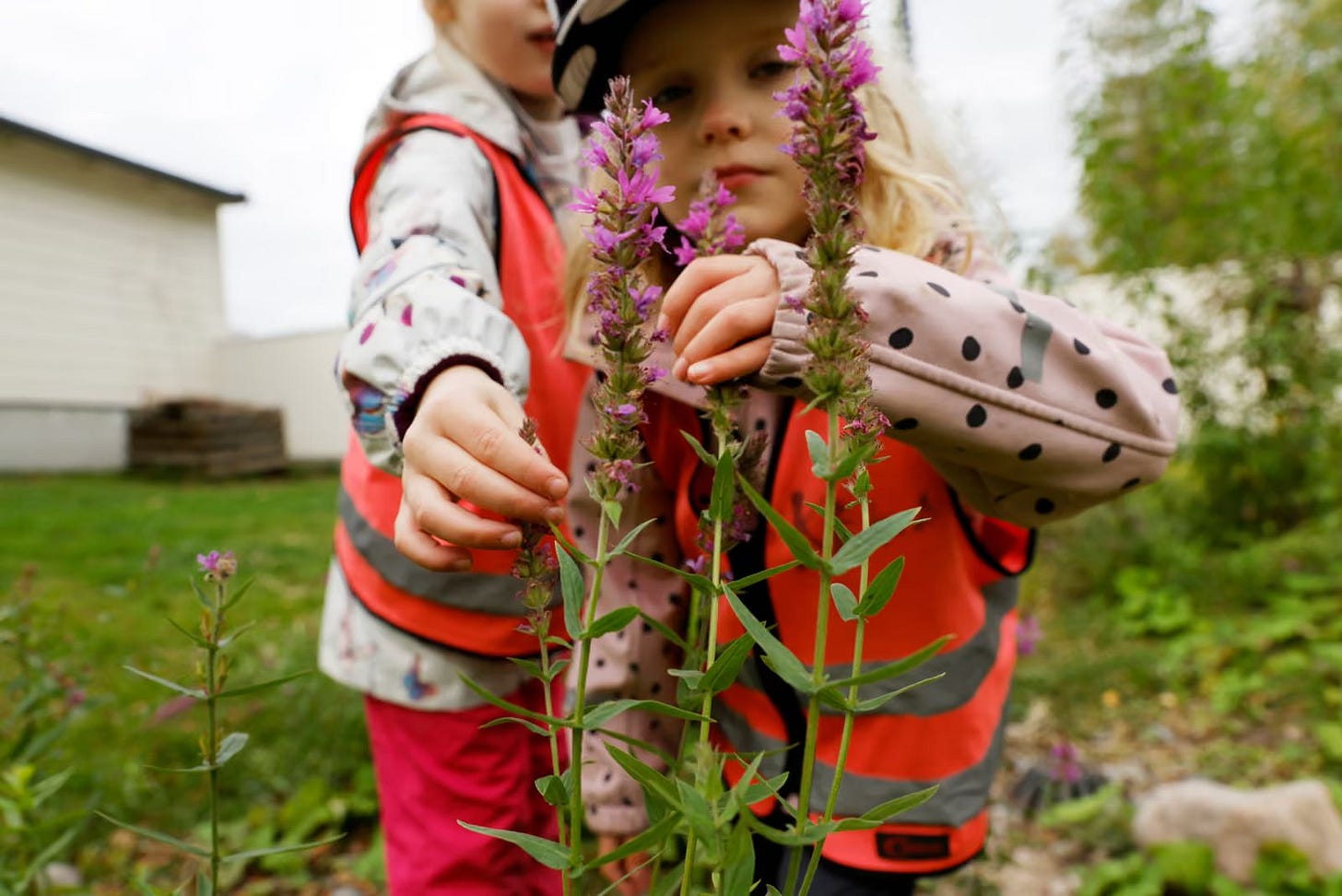A striking new experiment in Finland invites us to rethink what it means to “play in the dirt”. In a study of young children at nurseries such as Natural Resources Institute Finland, entire sections of forest floor, rich in soil, mosses, leaf-litter and wild undergrowth, were installed in playgrounds. Within just weeks, children’s immune profiles shifted, their skin and gut micro-biomes diversified, and the idea that playing in nature is a “nice to have” became something more urgent: a public-health intervention.
At LettsSafari, our mission has always been to help gardens, balconies and small parks become mini-rewilded spaces. What this Finnish study shows is that nature isn’t just aesthetic - it’s foundational for health, relationships and ecosystem resilience. Let’s unpack what’s going on, what it means for our green-spaces (even at the scale of a balcony) and how LettsSafari is ready to help you translate the findings into action.
What the Finnish Experiment Found
1. Micro-biodiversity matters
The research highlights two “layers” of biodiversity: the outer (soil, plants, fungi, environmental microbes) and the inner (our skin, gut, airways microbiota). The Finnish nurseries increased the outer layer, forest-floor soil, plants, mosses, and this changed the inner. The children playing in the enriched yards acquired more diverse skin and gut bacteria and greater immune regulatory markers.
2. Immune-system regulation improved
Within as little as 28 days, children in the intervention group showed higher levels of regulatory T-cells and other immune markers associated with reduced inflammation and fewer immune-mediated illnesses.
3. The setting and surfaces matter
Compare a standard urban play‐area (asphalt, gravel, rubber mats) with one transformed into a living substrate of forest soil and vegetation: the microbial richness exploded. The “rewilded” yards had many more microbes and plant species, giving children the chance to touch, explore, dig, forage, even get muddy, and thereby absorb nature’s microbial network.
4. Broader implications for human and planetary health
The study reinforces the so-called “biodiversity hypothesis” which posits that reduced contact with diverse environmental microbes (in modern, urban, sterile settings) may be driving the rise of allergies, autoimmune disease and other immune-dysregulation ailments. It also shows us that healthy ecosystems (soil, plants, fungi, microbes) are intimately connected to human health - not as separate domains but as interwoven systems.
How this aligns with LettsSafari
Smaller-scale rewilding, big impact
Even if you have just a balcony, a patio or a small garden, introducing richer substrates (leaf-litter, native plants, moss patches) can help re-connect the micro-ecosystem underfoot. The Finnish experiment used relatively modest interventions (forest-floor patches) and still saw measurable human benefit. That means your space counts.
Rewilding as health investment
We often talk about wildlife corridors, species restoration and carbon capture—but this study highlights that rewilding also supports human immune health. In your marketing for LettsSafari you can lean into this: it’s not just “make your garden nature-friendly”, it’s “boost your microbiome, enhance your wellbeing”.
Bringing nature in, rather than distancing it
Modern gardens often use clean gravel, manicured lawns, sterilised surfaces. The Finnish study shows the value of letting natural complexity in: soil, microbes, plants. At LettsSafari we encourage replacing sterile surfaces with living ones, planting native species, creating “mini-wild zones”.
Long-term thinking in short-term windows
Though the major immune shifts were seen in about a month, the value compounds over years. If children’s immune systems benefit from just weeks of enriched soil exposure, imagine what a decade of exposure could do. For gardens, the message is: start now; the ecosystem you build today supports future health, for humans and planet.
Climate resilience meets human resilience
Rewilded gardens don’t only serve us - they serve the broader web of life: pollinators, soil fungi, insects, birds, micro-habitats. By shifting from conventional ornamental landscaping to micro-biodiverse zones, we build resilience in the face of climate change, biodiversity loss and ecological disconnection.
At LettsSafari we specialise in turning gardens, balconies and smaller urban spaces into thriving micro-ecosystems. Here’s how we align with, and build on, the Finnish findings:
Rewilding subscriptions & toolkits: Our subscription service guides members step-by-step through creating biodiverse substrates: how to incorporate native leaf-litter, moss patches, dead-wood zones, wild native plants. These are precisely the kinds of interventions that enrich microbial exposure.
Design templates for any scale: Whether it’s a window-box or a 200 m² park zone, our design templates account for creating “dirty zones” - areas where nature can do its work: soil-based play, wild plants, water infiltration zones.
Educational content with the story: We don’t just install landscapes; we empower people to understand why. We share stories, photography, quick reels and content that connects the dots between biodiversity and human health, so the end-user becomes a steward, not just a spectator.
Scaling urban ecosystem transitions: The Finnish experiment was a preschool yard. We scale that idea into every garden, balcony and park. By doing so, we help build a mosaic of nature‐rich spaces across urban zones, boosting the “micro-biodiversity fabric” of our cities.
Conclusion
The Finnish soil-play experiment is more than a fun sound-bite about “children getting muddy”. It is a profound illustration that when we bring more of nature into our lives, we bring more of ourselves - our health, our resilience, our connection. At LettsSafari, we’re committed to making that connection tangible, accessible and beautiful. Let’s get dirty together and grow something wild, healthy and enduring!



